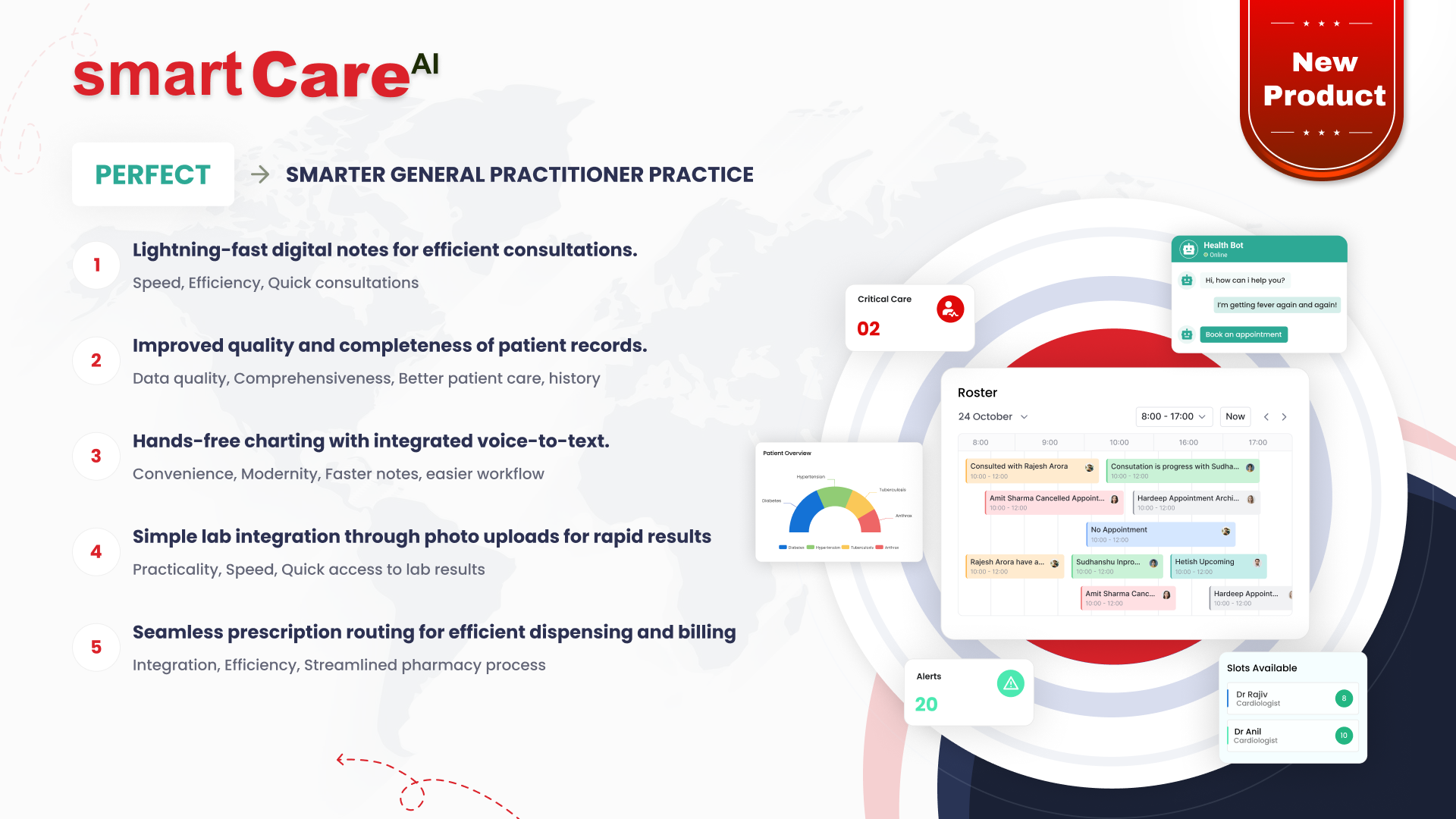Effective strategic planning is essential for driving business growth and ensuring long-term success. By focusing on purposeful growth, making bold moves, dynamically allocating resources, launching strategic initiatives, adapting to market changes, developing talent, and measuring performance, businesses can create robust strategies that foster innovation, resilience, and sustainable success. Key aspects of strategic planning for business growth include:
Purposeful Growth:
Prioritize profitable and sustainable growth, aligning expansion with core values and objectives. This approach fosters a culture of innovation, employee engagement, and customer satisfaction.
Bold Moves:
Proactively choose growth opportunities and allocate resources to support them. Embracing a through-cycle growth mindset, even during economic uncertainty, is crucial. Bold bets during challenging times can lead to steeper growth curves and competitive advantage.
Dynamic Resource Allocation:
Establish a flexible framework for allocating resources, including capital and talent. Encourage experimentation, shutting off underperforming projects while retaining talent. Failed experiments should be viewed as opportunities for growth, not penalties for executives.

Strategic Initiatives:
Drive long-term success through targeted initiatives, such as new products, market strategies, or digital transformation. These efforts often require significant resources and funding, differing from organic growth.
Agile Adaptation:
Stay attuned to market shifts and adjust strategies accordingly. Encourage a culture of continuous learning, innovation, and improvement.
Talent Development:
Invest in employee growth and development, ensuring the right skills and expertise to support strategic objectives.
Performance Metrics:
Establish clear, measurable performance indicators to monitor progress, adjust strategies, and optimize resource allocation.
By embracing these key aspects of strategic planning, businesses can drive purposeful growth, navigate uncertainty, and achieve sustainable success.
Some key strategies to consider for UI/UX resulting in business growth.
-
Research:
With the help of effective user research strategies you can get the best insights to achieve your goal otherwise if you don’t have proper data then it can end up with unsuccessful product. At each stage of product building lifecycle different kind of research is important which include formative research, user interviews, surveys, wireframes or prototype testing and usability testing
-
User stories:
User stories describe the functionality of product from user’s point of view expressed in simple flow. This defines user role, need and value. When writing user stories you need to think big as not restricting yourself looking to budget, cost and time. Prioritize stories as per release of features and assign them to team as per there role
-
Clean design and Design system:
create a clean design with minimalist design to avoid user issues. Also create design system as that will help you maintain consistency in all elements Typography, buttons, navigation, color scheme, spacing along with other sections of product. Your navigation be logical and help to show path to users. With design system you are defining you brand guidelines as well
-
Mobile first approach:
Your design should be created following mobile first approach and each and every section should be full responsive and provide seamless experience. It should work properly on each and every device and browsers. Optimization is important to avoid loading issues
-
Data Driven Design:
For creating effective and user-centric solutions data plays an important role as with the help of quantitative and qualitative data your product can be shaped better and you can take better decisions. A/B testing can also help you getting best out of 2 samples of UI/UX. With analytics you can user behaviour data
-
Accessibility:
If your design has followed accessibility guidelines for disable persons then definitely it can give good boost to your product and standout in market. Implementing accessibility will benefit all kind of users as responsive part also comes under that. Most of users using mobile phones for accessing websites. This will also give your brand additional value as you are taking care of all types of users as well
There are some strategies to manage your project budget effectively and ways to handle the unexpected cost overruns during the project:
Strategies to manage your project budget:
- Develop a Detailed Budget Plan:
Start with a clear understanding of the project’s scope and objectives. Break down the project into smaller tasks and estimate the costs associated with each task.
- Use Budgeting Software:
Use project budgeting software to help track and manage your budget. This can provide real-time insights into your spending and help you stay on track.
- Monitor Cash Flow:
Keep a close eye on the project’s cash flow to ensure that you have the funds available when needed. This includes monitoring incoming funds and outgoing expenses.
- Implement Change Control Processes:
Be prepared for changes in project scope or unexpected costs by having a change control process in place. This will help you assess the impact of changes and make informed decisions.
- Regularly Review and Revise the Budget:
As the project progresses, review the budget regularly to account for any changes or unforeseen expenses. Adjust as necessary to reflect the current state of the project.
- Communicate with Stakeholders:
Keep all stakeholders informed about the budget status. Regular communication can help manage expectations and ensure that everyone is aligned with the budgetary constraints.
- Learn from Past Projects:
Analyse the budgets of past projects to identify areas for improvement. Use this knowledge to make more accurate estimates in future projects.

Steps to manage cost overruns:
- Identify the Cause:
Determine the root cause of the overrun. It could be due to economic factors, technical issues, or inaccuracies in the project budget or scope.
- Review the Project Budget:
Examine the original project budget to understand where the costs are deviating.
- Communicate with Stakeholders:
Inform all stakeholders about the situation and discuss potential impacts on the project.
- Adjust Project Scope:
If necessary, negotiate changes to the project scope to align with the available funds.
- Optimize Resources:
Look for ways to optimize resource allocation and reduce costs without compromising project quality.
- Utilize Contingency Funds:
If you have a contingency fund, consider using it to cover the overrun, but do so judiciously.
- Monitor and Track Costs:
Keep a close eye on project expenses and regularly compare them with the budgeted amounts.
- Learn from Experience:
After addressing the overrun, review the situation to understand what went wrong and how to prevent similar issues in the future.
However, while AI’s technical prowess is undeniable, the human aspect remains paramount. At our IT company, we believe that the most effective AI integration respects and enhances the human element of our operations.
AI empowers companies to identify customer patterns, streamline operations, improve customer interactions, and provide employees with advanced tools and insights. However, while embracing these technological advancements, it is essential to maintain a human touch and consider ethical implications to build trust and foster strong client relationships.
Enhancing Efficiency and Decision-Making
AI’s ability to analyze vast amounts of data quickly and accurately can significantly enhance business efficiency. For instance, algorithms can identify patterns and trends in customer data, enabling us to tailor our services to meet specific client needs. This data-driven approach allows us to make informed decisions, improving overall business performance and customer satisfaction.
Streamlining Operations
AI can automate routine tasks, freeing up human resources for more complex and creative endeavors. In our business development processes, AI tools handle data entry, scheduling, and customer follow-ups. This automation not only reduces the risk of human error but also allows our team to focus on strategic activities that drive growth and innovation.
Improving Customer Interactions
One of the most significant benefits are the ability to enhance customer interactions. AI-powered chatbots and virtual assistants provide instant support to customers, answering queries and resolving issues in real-time. This 24/7 availability ensures that our clients receive the assistance they need, whenever they need it, without delay.
Empowering Employees
While technology handles repetitive tasks, it also empowers our employees by providing them with advanced tools and insights. For example, AI-driven analytics offer our sales and marketing teams a deeper understanding of market trends and customer preferences. Armed with this information, our team can craft personalized strategies that resonate with our target audience.
Maintaining the Human Touch
Despite it’s capabilities, maintaining a human touch in our interactions is crucial. AI should augment human efforts, not replace them. Personalized communication, empathy, and understanding are qualities that AI cannot replicate. We ensure that our clients always have access to a human representative when needed, reinforcing the trust and rapport we build with them.

Ethical Considerations
Responsible integration involves considering ethical implications. We prioritize transparency in how we use AI, ensuring that our clients understand the role AI plays in our processes. Additionally, we are committed to safeguarding data privacy and security, recognizing that trust is the foundation of our client relationships.
Conclusion
The integration of AI into business processes offers immense potential for efficiency, innovation, and growth. At our IT company, we strive to balance the technological advantages of AI with the irreplaceable value of human interaction. By leveraging AI responsibly and ethically, we can enhance our operations while fostering a human-centric business environment. The future of business lies in the synergy between AI and human ingenuity, and we are excited to lead the way in this dynamic landscape.
With the arrival of Foldable display devices UI/UX designer have to more creative as they need to design for these as well now and not only for simple or curved screens.
Location Based UX
With the help of AI, companies are collecting data on user behavior and movements. Based on this data, they are starting to tailor website content and design elements to individual users. This includes features like user preferences, especially on social media websites.
Intelligent Design
Intelligent designs created based on user emotions and potential pain points are key areas of focus. This includes interactions, visual elements, and language preferences.
AI in Design
With the help of AI, you can generate color palettes and efficiently edit photos by removing backgrounds or enhancing images. While still in the early stages, AI will soon be able to create user flows and more advanced features.
Voice User Interface
With voice assistants, users can interact with digital products using voice commands, enhancing accessibility and ease of use.
Air Gesture Control
Gestures are making more space in coming time for better user experience as with just a phone movement you can lock or unlock phone or with just a touch you can do some tasks.
Immersive 3D Elements
Realistic 3D avatars and visuals attract users and increase engagement with digital products. These elements will significantly impact user experience in the coming years, though website speed must also be maintained.
Surreal Product Photographs
There was a time when real photos came into trend but now people taken a sharp turn towards Surreal photographs where things are unreal and all about imagination
Technology evolves rapidly, with AI, cloud services, IoT, and 5G driving innovation and transforming businesses across all sectors.
Machines are Getting Smarter
Technology companies invest heavily in AI, teaching computers to think and learn like humans. This innovation leads to new type of services and products offerings in every segment of business, eventually it increases their revenues.
Rise of cloud service
Technology companies are shifting their data storage, backups and servers from their premises to cloud based. Cloud based services are cost savings and flexibility.
Everything’s Connected
The Internet of Things (IoT) links various devices, from household appliances to factory robots, creating new possibilities for tech companies, where one time investment results in years of profits.
Data Protection
Companies allocate significant resources to cybersecurity, safeguarding user data from hackers. many companies taking such services from tech company to prevent the data lick.
Going Green
Technology firms prioritize clean energy and recycling to reduce their environmental impact.

5G Rollout
The rollout of 5G networks enables faster communication and more connected devices, which again a money making machine for ISP and cellular operators companies.
Quantum computing
Scientists aim to build powerful quantum computers capable of solving complex problems beyond traditional computing capabilities.
Big Fish Eating Small Fish
Large tech companies acquire smaller ones to expand their reach and influence.
Money for New Ideas
Investors fund innovative startups with promising concepts. Rules and Regulations: Governments impose regulations on tech companies to ensure compliance and ethical practices.
Tech is changing super fast, and this is what’s driving the money behind it.
In order to improve the overall quality of services or products, it is necessary to detect and remove waste of time, resources, materials, and money. Organizations can achieve this by utilizing technology to optimize operations, automating tasks, and streamlining processes. Paper storage is no longer used because digital storage is more secure. Automation and other tools have also greatly increased productivity.
Businesses across all industries are using the power of digital tools and platforms to streamline operations, reduce costs, and stay competitive.
Below, we explore several key examples of how businesses can effectively use technology to enhance their operations and drive greater success.
Make use of the cloud and digital tools for document management
Utilizing the cloud can provide access to key data, documents, software, and other important resources from anywhere at any time, allowing businesses to be much more flexible in their operations. Not only does the cloud offer remote access, but it can also reduce your physical infrastructure costs. By using a dedicated cloud hosting service, the maintenance and running costs of your servers are carried by the service provider.
Digital tools for document management can transform your workflow by securely storing, organizing, and sharing files quickly. They eliminate the need for manual handling of papers and offer features like automated data entry and version control, providing a secure way to share documents with colleagues, customers, and partners.
Communication and collaboration
In the past, companies depended on phone calls, faxes, and face-to-face meetings to communicate with clients and employees. This was time-consuming and could be expensive if long-distance calls were involved. With email, instant messaging (MS Teams/Skype/WhatsApp/Zoom), and Slack, businesses can now communicate quickly and easily. These tools have made it easier for companies to collaborate on projects, allowing multiple people to work simultaneously regardless of their location.
- Tools like Google Docs, Sheets, and Drive:
Facilitate real-time collaboration and communication, improving teamwork and efficiency. These tools support teamwork and communication, even when working remotely, making collaboration easier and more efficient.
- Project Management Software (JIRA/Azure Board):
Tools for managing projects and tasks help IT teams stay organized, track progress, and manage resources effectively.
Automate processes wherever possible to improve efficiency
It is better to delegate simple or repetitive tasks to automated systems rather than relying on human input. By automating processes, you free up your team to work on more productive areas, increasing your overall output and improving your operational efficiency as a result.
Below are some examples:
- Implementing an AI chatbot:
Adding an AI chatbot can help automate customer service by providing answers to frequently asked questions.
- Social media management:
Instead of posting on each social media platform manually, use a social media management service to schedule and publish multiple posts to all your profiles at once.
- Hiring:
Instead of manually reviewing job applications, automated hiring software can help in identifying the most qualified candidates based on keywords and qualifications.
- Continuous integration (CI) and continuous deployment (CD):
Practices that streamline the software development process and significantly boost operational efficiency.
CRM (Customer relationship management) software
A CRM system helps manage and track client interactions efficiently. It allows businesses to monitor communications in real-time, keeping records organized and ensuring client needs are met. This streamlines staying on top of client interactions.
Decision making and data analytics
Data analytics tools help track key performance indicators (KPIs) and analyze business performance. They enable data-driven decision-making by showing how well operations are running through real-time data. These tools also offer predictive analytics to anticipate future trends, helping businesses identify hidden opportunities or threats and stay competitive.
As organizations aim to improve operations and customer experience, technology can help them adapt to market changes. Technology can significantly transform business operations, so companies looking to stay ahead should embrace it. By using technology in your business, you can make your operations more efficient. This means you can get more done with less effort, leading to better results.
Key Components:
- Adapting to Rapid Technological Change:
The technology landscape is constantly changing, making it difficult to stay current with new platforms, trends, and tools.
- Data Overload:
With an abundance of data available, it can be challenging to determine which metrics are most important and how to interpret them effectively.
- Limited Resources:
Organizations often face constraints in terms of budget, time, and personnel, which can limit their ability to implement strategic initiatives.
- Isolated Departments:
When departments operate in isolation, it can lead to a lack of collaboration and alignment on strategic technology initiatives.
- Changing Consumer Behaviour:
As consumer preferences and behaviours evolve, companies must adapt their technology strategies to meet these new demands.
- Cybersecurity Threats:
The increasing frequency and sophistication of cyberattacks require continuous investment in cybersecurity solutions and training.
- Differing Priorities:
Aligning the priorities of IT and business units is crucial but can be challenging due to differing objectives and perspectives.
- Resistance to Change:
Implementing new technologies often meets resistance from within the organization, which can slow down or derail strategic plans.
- Lack of Leadership:
Without strong leadership support, strategic plans may not be effectively communicated or prioritized within the organization.
- Poor Communication:
Clear communication is essential for the successful execution of a strategic plan, but it can be a significant hurdle if not managed properly.

Key Components:
- Technology Roadmap:
A clear outline of the planned technology initiatives and their expected impact on the business.
- Evaluation Metrics:
Criteria to measure the success of technology initiatives.
- Professional Development:
Ensuring staff are trained and capable of integrating new technologies.
- Technology Assessment:
A thorough analysis of current technology and future needs.
- Sustainable Strategy:
A plan that ensures technology growth is manageable and aligns with long-term business goals.
Planning Process Steps:
- Establish a supervising Committee:
Gather a team of stakeholders to guide the strategic planning process.
- Review Current Setup:
Assess the existing technology and infrastructure.
- Interview Key Individuals:
Gather insights from employees across different departments.
- Analyse and Assess Data:
Use the information gathered to identify gaps and opportunities.
- Develop the Plan:
Create a detailed strategy that includes specific actions, timelines, and resource allocations.
An effective strategic plan in tech development not only sets a direction for technology investments but also ensures that these investments deliver value to the business. It’s about making informed decisions that will drive innovation, efficiency, and competitive advantage.
Think of them as business lessons wrapped up in a captivating story! Here’s why case studies are so valuable:
- Examples:
Case studies aren’t just theoretical concepts. They showcase how real companies tackled real challenges. You get to see the decision-making process, the results, and sometimes even the mistakes.
- Lessons:
Each case study is a treasure trove of valuable lessons. You might learn about brilliant marketing strategies, innovative product launches, or even how to navigate a crisis successfully.
- Industries:
Management case studies aren’t limited to one sector. You can find examples from tech giants, fashion brands, grocery stores – basically any industry you can think of. This allows you to see how different management principles apply across various businesses.
- Building Blocks:
By dissecting successful case studies, you can identify the key ingredients that lead to business growth. These might include strong leadership, a focus on customer needs, or building a culture of innovation.

Two quick examples:
- Example 1: Netflix’s Rise to Streaming Domination:
This case study explores how Netflix transformed from a DVD rental service to a global streaming powerhouse by focusing on original content and user experience.
- Example 2: Turnaround at Apple:
This case study dives into how Apple, under Steve Jobs’ leadership, went from near-bankruptcy to one of the most valuable companies in the world through bold product innovation and design thinking.
By delving into these stories, you gain valuable insights that you can apply to your own business or career. Remember, success doesn’t happen overnight, but by learning from the experiences of others, you can increase your chances of achieving your own business goals!
-
Enhanced Efficiency and Productivity:
Digital tools streamline workflows and automate repetitive tasks, significantly boosting efficiency and productivity. Project management tools like Trello, Asana, and Jira enable teams to collaborate seamlessly, track progress, and meet deadlines effectively. Automation tools like robotic process automation (RPA) have greatly lessened the load of repetitive tasks
-
Streamline development and deployment:
Digital tools like integrated development environments (IDEs), version control systems, and continuous integration/continuous deployment (CI/CD) pipelines have made software development processes much smoother.
- IDEs:
Tools such as Visual Studio, IntelliJ IDEA, and Eclipse create a single environment for developers to write, test, and fix code. This makes teams more productive and improves collaboration.
- Version Control Systems:
Git, Subversion, and Mercurial help developers track changes to code, work together smoothly, and go back to previous versions if needed. This ensures code quality and helps teams work effectively.
- CI/CD Pipelines:
Automation tools like Jenkins, Travis CI, and GitLab CI/CD automate building, testing, and deploying software. This speeds up how quickly software is released, reduces mistakes, and makes releases more reliable.
- IDEs:
-
Improved Communication and Collaboration:
Effective communication and collaboration are critical components. Digital communication tools like Skype, Slack, Microsoft Teams, and Zoom have transformed how teams interact, making it easier to connect, share information, and work together regardless of geographical locations.
-
Data-Driven Decision Making:
Platforms like Tableau, Power BI, and Google Analytics enable organizations to gather, analyze, and visualize vast amounts of data from various sources. These insights help businesses understand customer behavior, market trends, and operational performance. By leveraging data analytics, companies can identify opportunities, predict future trends, and make strategic decisions that drive growth and innovation.
-
Enhanced Customer Experience:
It helps in enhancing the customer experience. Customer relationship management (CRM) systems like Salesforce, HubSpot, and Zoho CRM help manage customer interactions, track sales, and provide personalized service. Chatbots and AI-powered customer service tools offer instant support and resolve queries efficiently, improving customer satisfaction
-
Cost Savings and Resource Optimization:
The digital tools can lead to significant cost savings and resource optimization. Automation reduces the need for manual work, lowering operational costs. Cloud computing’s scalability has changed how we handle infrastructure, deploy applications, and grow their operations:
- Infrastructure as a Service (IaaS):
Services like Amazon Web Services (AWS), Microsoft Azure, and Google Cloud Platform (GCP) offer flexible resources (like servers and storage) that can adjust as needed. This helps scale up or down based on demand and avoid upfront costs for infrastructure.
- Platform as a Service (PaaS):
PaaS options such as Heroku, Microsoft Azure App Service, and Google App Engine simplify deploying and managing applications. Developers can focus on coding without needing to manage the underlying infrastructure.
- Software as a Service (SaaS):
Many companies provide their applications as SaaS products, delivering them over the internet on a subscription basis. SaaS eliminates the need for customers to install or update software themselves, while giving companies consistent revenue.
- Infrastructure as a Service (IaaS):
-
Remote Work and Flexibility:
The COVID-19 pandemic sped up the shift to remote work, with digital tools playing a key role in this change. Cloud-based solutions such as Google Workspace and Microsoft 365 enable employees to reach files and apps from any location, ensuring seamless business operations. Project management tools like Trello and Basecamp aid in monitoring progress and keeping remote teams accountable.
-
Improved Financial Management:
Digital tools like QuickBooks, Telly, Xero, and SAP Concur have simplified accounting tasks, expense tracking, and budgeting. These tools provide instant financial reporting, automate invoicing, and ensure adherence to financial regulations.
-
Marketing and Brand Awareness:
Facebook, Twitter, and Instagram help businesses reach more people, promote products, and build brand awareness efficiently. Also enables direct interaction with customers, fostering relationships, providing customer support, and gathering feedback to improve products and services.
-
Sales and Lead Generation:
Businesses can use Digital social media tools for targeted ads, driving website traffic, and generating leads through promotions.
-
Recruitment:
Naukri, Hirist, LinkedIn etc helps find talent, connect with professionals, and share updates.
-
Handling sensitive data and regulations:
- Identity and Access Management (IAM):
Tools like Okta, OneLogin, and Microsoft Azure Active Directory ensure secure access to applications and data, preventing unauthorized entry and data breaches.
- Compliance Monitoring:
Tools automate checks to meet regulatory standards (e.g., GDPR, HIPAA) and internal rules. This helps companies prove compliance to auditors and reduce legal risks.
- Security Testing:
Tools such as Nessus and Qualys find security weaknesses in software and systems. Fixing these issues quickly protects against cyber threats and improves overall security.
- Identity and Access Management (IAM):
-
Future Trends and Innovations:
- Artificial Intelligence (AI) and Machine Learning:
AI-powered tools for code analysis, automated testing, and predictive analytics will enhance development efficiency and product quality.
- DevOps and Site Reliability Engineering (SRE):
DevOps practices and SRE principles will be further integrated with automation tools to optimize software deployment, monitoring, and incident response.
- Microsoft Co-Pilot:
Intelligent code suggestions help programmers complete code faster and with fewer mistakes by autocompleting lines or blocks of code. They identify potential errors and suggest corrections in real-time, reducing debugging time and improving code quality. Writing boilerplate code can be tedious, but Co-Pilot can generate it automatically. Overall, these features speed up the coding process and enhance efficiency.
- Edge Computing:
As IoT devices and applications proliferate, edge computing tools will enable software companies to process data closer to the source, reducing latency and improving performance.
- Blockchain Technology:
Blockchain platforms will facilitate secure transactions, digital asset management, and decentralized applications (dApps) in sectors like finance, healthcare, and supply chain management.
- Artificial Intelligence (AI) and Machine Learning:
Conclusion:
Digital tools have significantly enhanced operational efficiency, driving innovation, productivity, and customer satisfaction. By improving development, project management, customer support, data-driven decisions, and using cloud computing, it helps to work more efficiently and stay competitive. As new technologies emerge, any company will keep evolving, adopting advanced digital tools to stay ahead.
